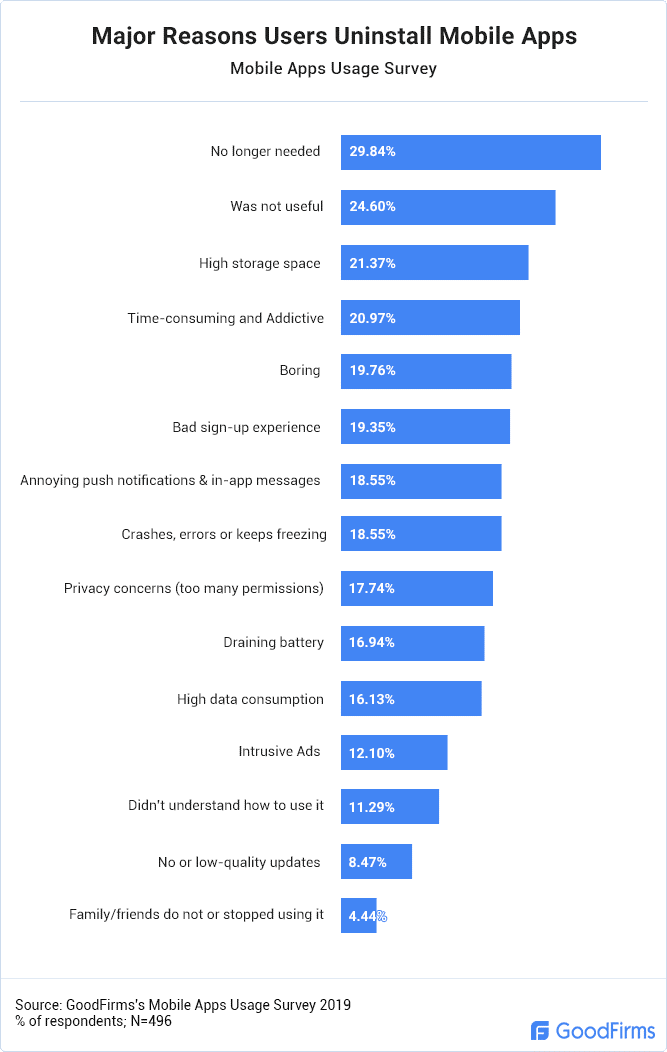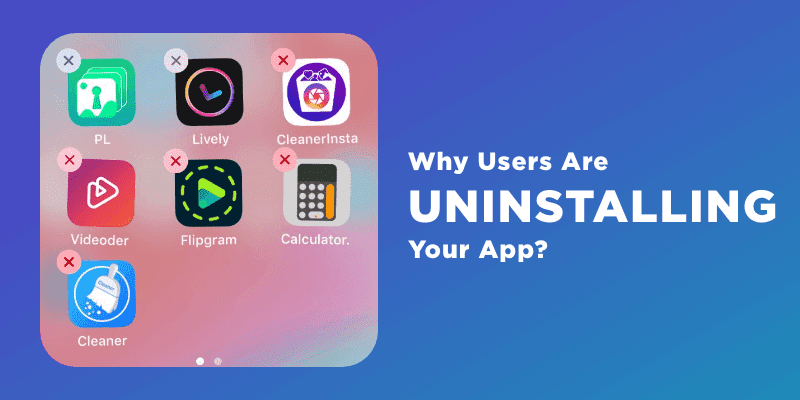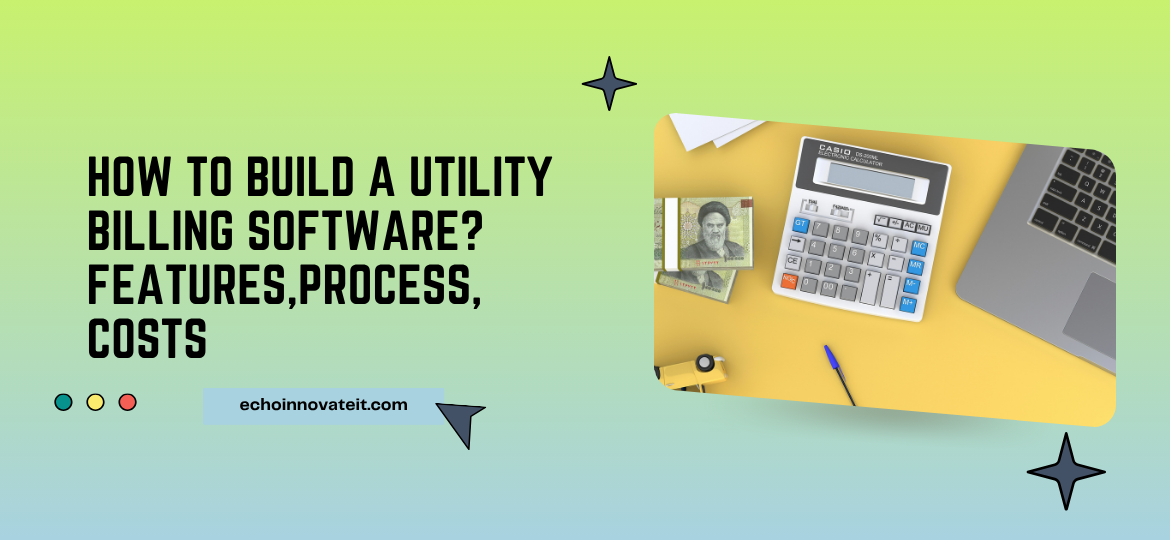Reasons for App Uninstall
The worst fear of the top app developers is their users uninstalling the app after using it!
You have made the best app, and it is getting a good number of downloads on the app stores. But, does it ensure that your users will continue to use it after downloading?
A recent GoodFirms survey suggests that around 65% of the participants is an app uninstalled rate. The data is scary. We don’t want our app to be the one that the user uninstalls next!
The high app installation rates compel us to identify the causes of the app uninstall, and correct these as best as we can.
So, here are the crucial reasons your users are uninstalling the app.

1. No Longer Needed
The app is no longer needed is the most significant cause of its uninstallation. Users must find the app useful; else they will stop using it.
But, what can you do to prevent the obsolescence of your app?
You have to keep updated on all the technological and usage trend changes. And, to match up with the trends, you must issue regular app updates.
You must include all the latest features that your users need, as they are keen to shift to a competitor app in the absence of these features in your app.
Good user experience and ease of use contribute a lot to the continuity of an app, but these are futile if the user does not need the app!
2. High Storage Space
Though it may appear unbelievable, the app occupying too much application of the storage space on the user device tops the list of reasons that your app is uninstalled.
Users are increasingly becoming smartphone-dependent. And, they use smartphones for all day-to-day needs like reminders, to-do lists, banking, messaging, etc. You can imagine the number of apps they require on their phones.
But, not all users have very high-capacity devices. And some of them need too many apps. So, it is most likely that such users will continue to use space-friendly apps only.
I know what you are thinking; the top app developers very well know how to build space-efficient apps!
3. Time-Consuming & Addictive
Some apps are time-consuming and addictive. These incite more engagement initially. But, gradually, the user gets bored and uninstalls the app.
So, your aim should be to build apps that do not become an addiction, but rather a fulfilling experience for a sensible user.
Addictions can fade away, but a utility will always be the primary determinant of a product or service being accepted and used by the user.
So, the idea is to build high-utility and engaging apps, which are not just addictive!
4. Crashes or Freezes
You are about to complete a payment on your favorite shopping app, and the app freezes, leading you to nowhere! And, you don’t even know if your payment is through.
Well, many users have experienced such situations with one app or the other. And, guess what the user will do; he will never use the app again!
Users like easy-to-use and functional apps. Poorly coded apps are vulnerable to crashes and freezes.
Performance testing is thus a very significant step in the app development cycle. Effective debugging can also help you build robust apps that won’t betray the user.
After the app is in the stores, crash reporting is another way of collecting regular app health information. You can release updates on your apps after rectifying the code leading to the errors.
5. Push Notifications
Too many push notifications distract the user from his work and routine. Most busy users don’t like apps that keep disturbing them all the time. So, always give an option to the user to decide what notifications he wants to receive.
Similarly, the in-app messages, commonly used by app developers for marketing, can be very annoying for the users. Keep these to the minimum if you want your users to continue using the app.
Users should also be given the option of disabling unwanted push notifications.
It is also a good idea to take feedback from the users about push notifications and messages. Remember, the user understands a good user experience better than you do, from your mere reading of blog posts.
6. Security Threat
Suspicious behavior of your app is a reason enough for your user to uninstall it, to never install it again.
Everyone values the security of his data, and the user will reject an app that makes his device vulnerable.
So, even after the app is developed, and out in the stores, keep focussing on app security. Build regular updates to cover any prospective security concerns. User’s trust is valuable, maintain it!
To Conclude!
Undoubtedly, users love smartphones, and they spend a considerable time of their day with their phones. And, smartphones are nothing without apps.
One can reasonably conclude how important apps are for users. And, still, is the users are uninstalling your app, there has to be something that you must do about it!
Keep a check not just on your app downloads, but also on how many times your app is uninstalled. Do also record how many days, or months an average user continues to use your app without uninstalling.
App developers exist because users do. Make your app an experience that the user doesn’t want to lose.
FAQs of How to increase user engagement
Why Do Users Uninstall apps?
Here are the Top 6 Reasons why users Uninstall Apps
-
- No Longer Needed
- High Storage Space
- Time-Consuming & Addictive
- Crashes or Freezes
- Push Notifications
- Security Threat
Reasons Why Mobile App Fails & How to Make it Successful?
Listed below are the reasons for your mobile app failure and you can make it successful by overcoming these challenges:
- Lack of originality
- Substandard research on market and competition
- Poor strategies in promoting, branding and advertisement
- Lack of capital and resource investment
- Low scores in user experience and friendliness
- Failure to undertake app testing
- Inappropriate monetization strategy



